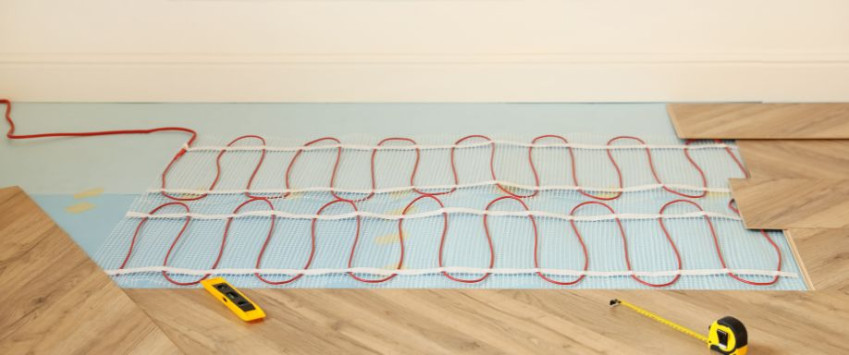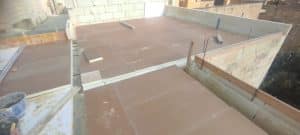Knowing exactly how to turn on underfloor heating can make a major difference—not just in comfort, but in energy efficiency and long-term system performance. Whether you’re returning to your Malta home after the summer, or you’re using your radiant floor heating for the first time, starting it up correctly ensures warm floors and lower bills.
In this comprehensive guide, we’ll cover everything you need to know—from thermostats and timers to hydronic vs electric systems—so you can confidently warm your space the smart way.
🔥 Why Knowing How to Turn On Underfloor Heating Properly Matters| How to Turn On Underfloor Heating
Many homeowners assume they can simply “switch it on” like a regular heater. But underfloor heating systems (especially in Malta’s stone or tiled homes) require a bit more finesse. Failing to follow proper startup steps can:
Overload your electrical system
Cause uneven heating across the room
Crack tiles or warp floors from sudden heat surges
Waste electricity or water
Reduce the lifespan of your system
This guide will teach you how to turn on underfloor heating correctly, depending on your system type, floor type, and home layout.
🔧 1. Identify Your Heating System Type First| How to Turn On Underfloor Heating
Before you touch a thermostat, you need to understand what kind of underfloor heating you have. There are two main types commonly installed in Malta:
➤ Electric Underfloor Heating (Dry Systems)
These use electric heating cables or mats laid beneath the floor. They’re easy to install and work well in individual rooms like bathrooms and kitchens.
Startup time: 15–60 minutes
Control: Usually via programmable digital thermostat
Cost to run: ~€0.13–€0.20/hour per room depending on usage
➤ Water-Based Underfloor Heating (Wet Systems)
Hydronic systems circulate warm water through pipes beneath the floor. They’re often connected to a boiler or heat pump and are better suited for full-home heating.
Startup time: 2–3 hours (due to water circulation and slow heat-up)
Control: Via central manifold and room thermostats
Cost to run: ~30% more efficient than radiators long-term
Still unsure which one you have? If you’re in Malta and need help, contact us and we’ll inspect or advise you remotely.
📲 2. Set Your Thermostat Properly (Don’t Skip This!)| How to Turn On Underfloor Heating
One of the most common mistakes people make when figuring out how to turn on underfloor heating is ignoring their thermostat settings. Don’t just crank it up to max—this can actually trigger protective shutoffs in some smart systems.
Step-by-step:
Turn on the main switch (breaker or master switch).
Wait 1–2 minutes for the system to initiate.
Set your desired room temperature—typically 20–23°C.
If programmable, set up time zones or heating schedules.
Enable floor temperature limits if available (to protect timber or tile floors).
💡 Pro tip: Use lower temps for bedrooms (18–20°C) and slightly higher for bathrooms (22–24°C). This avoids overheating and reduces your energy bill.
Not sure how to program your thermostat? Our team at Kibitec offers remote setup or full-service installation—just reach out to us here.
⏱ 3. Let It Warm Up Slowly—Especially After Long Inactivity| How to Turn On Underfloor Heating
If your system has been off for months (say, over summer), you can’t just blast it to 25°C. Both electric and water systems need time to gradually reheat the floor slab or screed to avoid thermal shock.
Here’s a safe warm-up routine:
Day 1: Set thermostat to 17°C
Day 2: Increase to 19°C
Day 3: Go up to 21°C
Day 4+: Maintain target temperature or use schedules
This staged approach is especially crucial for homes with tiled floors or wooden laminates, which may crack or buckle under rapid temperature changes.
Kibitec’s heating experts can help you set a staged routine tailored to your home. Book your service today.
🚿 4. Check for Airlocks and Pressure in Hydronic Systems| How to Turn On Underfloor Heating
If you have a water-based (hydronic) underfloor system, it won’t heat properly unless pressure and flow levels are correct. This is especially true if the system was off for an extended period or if you had plumbing work done.
Basic checklist before turning on:
Is the boiler pressure between 1.0–1.5 bar?
Can you hear water circulating once the system is on?
Are all zone valves open at the manifold?
Are air bleeders installed and functioning?
You don’t want trapped air stopping your heating zones from warming up. Bleeding your system once a year (preferably before autumn) is recommended.
Need help bleeding your heating zones? Our technicians can service and reset hydronic systems anywhere in Malta. Click here to book.
🧠 5. Use Smart Controls for Efficient Daily Use| How to Turn On Underfloor Heating
Once you’ve figured out how to turn on underfloor heating, take it a step further with smart thermostats. These devices learn your habits, adjust temperatures automatically, and offer app control.
Top features to look for:
Wi-Fi enabled with phone app
Geolocation (adjusts heating based on your location)
Multi-room zoning
Weather-based control (warms up earlier on cold days)
Energy consumption reports
Some top brands compatible with Malta homes include:
Heatmiser Neo
ThermoSphere SmartHome
Tado and Nest
Uponor Smatrix Pulse
Kibitec installs and configures these for both electric and hydronic setups. Explore our smart heating solutions here.
📉 What NOT to Do When Turning On Underfloor Heating| How to Turn On Underfloor Heating
Now that we’ve covered the ideal steps, let’s quickly list what to avoid:
Don’t max out the thermostat on day one—it causes thermal shock.
Don’t skip checking your system type.
Don’t activate timers before checking floor sensor limits.
Don’t use underfloor heating with rugs unless they’re marked safe.
Don’t turn off thermostats after warm-up—use eco/sleep settings instead.
Mistakes can be costly. Floor repairs in Malta can cost anywhere from €300 to €1,000 per room if heating damage occurs under tiles or wood. Avoid this by warming up gradually and maintaining your setup.
🌐 Learn More About Underfloor Heating| How to Turn On Underfloor Heating
If you’re new to radiant systems, it’s worth getting familiar with the basics. Check out the full overview of underfloor heating and how these systems deliver heat by radiation, conduction, and convection beneath your floor surface.
🔍 6. Troubleshooting: What to Do If Your Underfloor Heating Isn’t Turning On| How to Turn On Underfloor Heating
Even if you’ve followed all the steps on how to turn on underfloor heating, things don’t always go smoothly. Here’s how to troubleshoot common issues before calling in the pros:
🛠 Electric Underfloor Heating Troubleshooting
No power to thermostat: Check the circuit breaker or fuse box. Reset if needed.
Thermostat screen is blank: Replace batteries or check wiring.
Room stays cold: Your floor sensor may be disconnected or misconfigured. Floor sensors typically cost around €20–€40 to replace in Malta.
Uneven warmth: Floor mats may have gaps, or your insulation may be lacking.
💧 Hydronic Underfloor Heating Troubleshooting
Cold floor but boiler is on: Airlock in the pipes. Bleed the loop at the manifold.
Low water pressure: Your boiler may have dropped below 1.0 bar. Refill carefully.
Pump not running: Could be a stuck valve or failed actuator.
Only some zones heating: Check if zone valves are stuck or if thermostats are synced.
If you’re unsure, don’t risk damaging the system. Our team at Kibitec offers inspections, maintenance, and emergency service throughout Malta.
🌦 7. Seasonal Usage Tips for Malta’s Climate| How to Turn On Underfloor Heating
Malta’s mild winters and hot summers make underfloor heating a fantastic choice—but you need to use it differently than in colder countries. Here’s how to adjust your habits for max efficiency:
🧵 Autumn Startup Routine
Begin warming the floors in early October, before the chill sets in.
Use gradual temperature increases to protect floor surfaces.
Program weekday vs weekend heating schedules around your lifestyle.
❄ Winter Efficiency
Maintain steady temperatures (20–21°C). Avoid switching off daily.
Pair with insulated rugs (suitable for radiant heat) to boost comfort.
Close doors to retain heat in occupied zones.
🌞 Spring Shutdown
Don’t shut off suddenly. Lower the thermostat by 2°C every 2 days.
Once off, clean thermostats and inspect manifolds for buildup or leaks.
Schedule a pre-summer service checkup with Kibitec to prep for next season.
Heating a 3-bedroom home with hydronic UFH in Malta typically costs €1.80–€3.50 per day in winter, depending on insulation and room usage. Smart scheduling and thermostats can lower this by 25–30%.
8. 🔄 What If You Turned It On Too Soon After Installation?| How to Turn On Underfloor Heating
If your underfloor heating was just installed, resist the urge to turn it on immediately. Cement screed or self-leveling compounds need time to fully cure—typically 7 to 28 days. Turning on the heat too soon can cause cracks, delamination, or warped floors, especially if you’re installing wood or vinyl finishes. Always follow the manufacturer’s recommendations and consult your installer—like our team at Kibitec—to avoid costly mistakes.
9. 🔋 Optimising Energy Efficiency When Turning It On| How to Turn On Underfloor Heating
When learning how to turn on underfloor heating, energy use is a common concern. The good news? Underfloor heating is more efficient than radiators when used correctly. Use smart thermostats, zoning, and insulated floors to retain heat. Also, avoid cranking up the temperature quickly; slow, incremental increases reduce strain and save money. In Malta, optimising energy can cut your heating bill by up to €250 annually.
10. 🧑🔧 Why Hiring a Professional for Setup Can Save You Money| How to Turn On Underfloor Heating
While setting your underfloor heating might seem simple, many systems require calibration, especially water-based ones. Sensors, valves, pump speed, and floor type all influence performance. A poorly set system can cost you more in electricity or gas. Having a professional configure it during your first setup (or seasonal restart) ensures it runs at its most efficient, reducing long-term maintenance costs. Contact Kibitec to make sure yours is done right.
11. 🌍 Underfloor Heating and Eco-Friendly Living in Malta| How to Turn On Underfloor Heating
Malta’s sunny climate offers a great opportunity to integrate solar power with underfloor heating. When combined with smart thermostats and solar panels, underfloor systems can drastically reduce a home’s carbon footprint. Several new-builds in Malta are choosing this pairing to meet EU energy efficiency regulations. Talk to us at Kibitec about eco-installation options that support sustainability without sacrificing comfort.
12. 🧼 Post-Winter Cleaning Tips Before Turning It Back On| How to Turn On Underfloor Heating
Before you turn your system back on after months of inactivity, do a quick system check. Dust the thermostat, inspect floor areas for damage or trapped furniture, and listen for unusual noises when the system starts. For water systems, check for leaks or corrosion around the manifold. A quick 15-minute routine can prolong your system’s life and save you on repair bills down the road.
13. 🏠 How to Turn On Underfloor Heating in a Vacation Home| How to Turn On Underfloor Heating
If you’re using underfloor heating in a holiday property, consider a smart thermostat with remote access. This allows you to turn on the system a few hours or days before your arrival, ensuring a warm welcome. Systems like Heatmiser Neo or Nest are popular in Malta and integrate seamlessly with most modern setups. Our team can help you set it up remotely or in person.
14. 💸 Typical Costs for Turning On or Servicing Your System| How to Turn On Underfloor Heating
You won’t usually pay to turn on underfloor heating yourself, but professional startup and maintenance services can range from €60 to €150, depending on system size and condition. New thermostats cost €80 to €200, while full servicing of a hydronic system may cost up to €300. Kibitec offers competitive pricing, expert service, and seasonal packages to ensure your system runs efficiently year-round.
💬 FAQs: How to Turn On Underfloor Heating| How to Turn On Underfloor Heating
Here are some of the most common questions we get from homeowners in Malta:
❓ Can I turn on underfloor heating myself?
Yes, if your system is in good condition and you follow safety and thermostat setup instructions. But if it’s the first time after installation or after months of being off, a quick checkup is smart.
❓ How long does it take to warm up?
Electric systems: ~20–60 minutes
Water systems: ~2–3 hours, depending on floor material
Tile and stone floors hold heat longer but take longer to reach temperature.
❓ Is it okay to use underfloor heating every day?
Absolutely! In fact, these systems are designed for steady use. It’s more energy-efficient to keep it running at lower temps than constantly switching it on and off.
❓ What’s the best floor temperature?
Most floors feel warm at 27–29°C surface temp, which corresponds to 20–23°C room temp. Never exceed 32°C, especially under wood or laminate floors.
❓ Can I install a smart thermostat later?
Yes! We recommend upgrading to Wi-Fi thermostats if your system was installed more than 3 years ago. Kibitec provides expert thermostat replacement and setup services.
📞 Ready to Get Expert Help?| How to Turn On Underfloor Heating
If your underfloor heating isn’t turning on, needs maintenance, or you simply want it set up professionally, we’re here to help.
👉 Contact our team today to schedule a visit or a free virtual consultation.
Whether it’s a basic thermostat issue or a complex hydronic system, Kibitec is your trusted local expert for underfloor heating services in Malta.
🔧 Check Out Our Underfloor Heating Services| How to Turn On Underfloor Heating
Looking to install a new system or upgrade an existing one? Kibitec offers:
Full electric and water-based system installation
Thermostat upgrades (smart & manual)
System repairs and troubleshooting
Seasonal startup/shutdown service
Maintenance plans
👉 Explore our full service offerings here
We offer tailored packages for homeowners, property developers, and renovation projects across Malta.
🔗 Learn More About Underfloor Heating| How to Turn On Underfloor Heating
Want to understand the science behind how your system works? Dive deeper into the world of underfloor heating and discover how it heats rooms through a mix of conduction, convection, and radiant heat.




